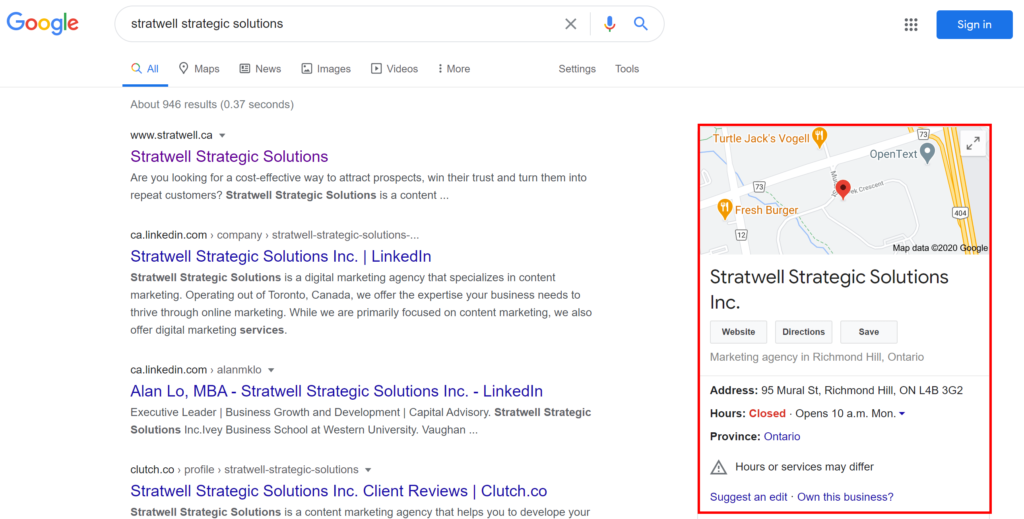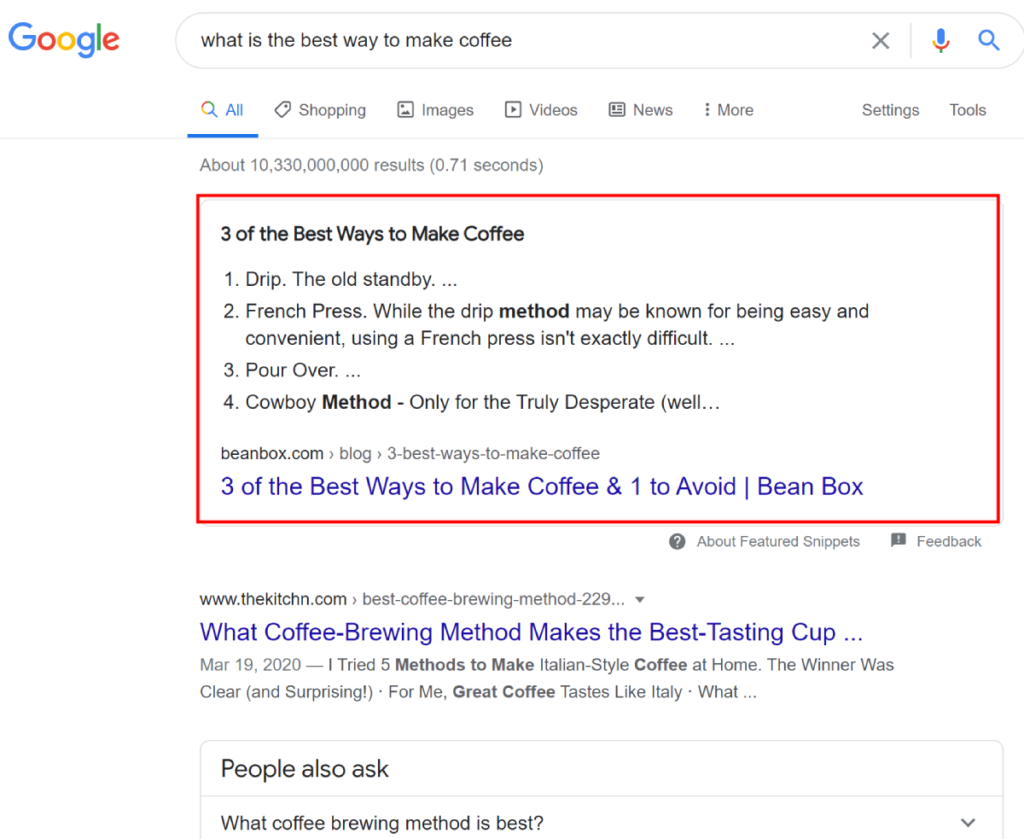It’s hard to imagine search engine optimization (SEO) without Google, which today dominates the search engine market. However, the practice began before Google’s official launch in 1998 and has evolved over the years. Search engines have become a lot more sophisticated, with the goal of delivering a better internet experience for the users.
Why Understanding the History of SEO is Crucial
Digital marketers now know too well that it’s no longer enough to just create a website, write a few articles, and expect it to rank well on search engine results pages (SERPs). You now have to build a great website, put up high-quality content that answers searchers’ queries, and have a robust link building strategy to get favorable rankings.
SEO is in a constant state of evolution and digital marketers have to constantly review their strategies to reduce the risk of fading into irrelevance or becoming hopelessly obsolete. However, you cannot fully appreciate the full scope of SEO without first understanding its history.
For instance, with a market share of 70.38% of desktop users and 93.87% of mobile users using Google as their search engine, the platform has the power to significantly influence search results and your overall SEO rankings. Therefore, it would be critical to understand Google’s core aims and the history of changes to its search algorithms.
The Evolution of SEO
When the SEO industry was still in its infancy, many business owners and marketers hadn’t quite grasped the concept. It was a developing industry, and little did they know that they would have to learn an entirely new subset of marketing.
So when did SEO start?
Pre-Google
It’s now incredibly difficult to discuss SEO without invoking the name of Google. However, despite its great influence, it wasn’t the first search engine. With other platforms not named Google providing website indexing, SEO existed before it’s launch in 1998.
Here’s a short SEO timeline showing key milestones and a brief history of search engines:
1994-1995
In 1994, Yahoo! became the first popular web directory whose main aim was to provide students with useful website links. At the time, webmasters and website owners had to submit the pages manually for indexing.
Lycos, the first true user-friendly search engine, and Alta Vista, the biggest back then, were the dominant search engines.
1996
This was an important year for the SEO industry as it saw Larry Page and Sergey Brin launch Backrub, a research project that would later birth Google. Backrub relied on the popularity and relevance of inbound links and the counting of backlinks as votes to determine SERPs.
This, of course, created problems as webmasters began to go over the top with spammy backlinks and exploiting all kinds of loopholes to drive their sites to the top of search engine results.
1998
Many consider this a pivotal moment for SEO and search engines. Google officially launched in 1998, at a time where search engines were making content less friendly, and search results could be manipulated by black hat tactics such as keyword spamming, white text links, and backlinks spamming.
Google wasn’t happy with the way such tactics weren’t benefitting most internet users. To create a more level playing field for search rankings, Google released a series of updates to its algorithms.
Here are some of the notable ones:
Florida Update (2003)
This was Google’s first major update. Released in 2003, Florida update led to a major shake-up in search results by targeting the highly commercial websites. While Google’s exact algorithm was largely unknown, Florida worked by implement an SEO filter on certain keywords that were often manipulated and placing those websites through the filter. The goal was to discourage unethical SEO practices such as keyword stuffing and the update improved search results significantly overnight.
NoFollow (2005)
Despite the first major update to its algorithm, comment spam was still a huge problem. Nofollow was Google’s innovative strategy for fighting comment spam by establishing which links to ignore from people who abused public online community forums.
Caffeine Update (2010)
In 2010, Google launched Caffeine update, which was a new indexing system that first looked at web pages that were fresh or recently updated before tending to older webpages. This meant that newer pages were indexed faster than older pages.
While the Caffeine update didn’t quite shake up rankings, it signaled that Google’s algorithm was becoming more sophisticated. It significantly boosted Google’s raw speed and integration of crawling and indexing. The search engine was essentially setting itself apart as the industry leader, prompting SEO as a whole to begin focusing on one search engine.
Panda 1.0 Update (2011)
Many SEO watchdogs likened Panda’s effects on rankings to an earthquake due to the magnitude of impact through the subsequent few years. The update was released in February 2011 and was quickly followed by Panda 2.0 two months later.
Panda was initially intended as a content filter that sought to ferret out low-quality content, duplicate or spun content, spammy content, and keyword-stuffed content. It was later included as part of Google’s core algorithm.
Penguin Update (2012)
The Penguin update targeted links that Google deemed to have been manipulating rankings. This included the more obvious link building, exact match anchor text, spam links, and links within irrelevant content. Penguin went through a series of iterations before becoming a core part of Google’s algorithm.
Hummingbird Update (2013)
With the Hummingbird update, Google could interpret user search queries rather than just considering exact keywords. Since the Hummingbird update wasn’t a penalty evoking update, it didn’t quite shake up rankings.
Pigeon Update (2014)
The Pigeon update was also one of Google’s big updates that focused on search user’s locations. This was also the year that Google indicated that social media metrics were not going to be a factor in search rankings.
Mobile Search (2015)
The rise of mobile searches prompted Google to update its algorithm to stay on top of the game. The Mobile Search update penalized poor quality mobile sites, which were considered unhelpful to users. As a result, Google filtered out pages that weren’t optimized for mobile.
RankBrain and Penguin 4.0 Updates (2016)
As Google expanded its knowledge graphs and began to better understand search user queries’ intentions, it issued the RankBrain and Penguin updates to its algorithm. RankBrain is Google’s name for a machine-learning artificial intelligence system that’s used to help process its search results. Google considered it to be its “third most important ranking factor.”
BERT Update (2019)
The release of BERT (Bidirectional Encoder Representations from Transformers) signaled Google’s attempt to understand more complex user search queries and how the sequence of their wordings related to their intentions. That meant that Google could now better understand conversational queries.
NoFollow Update (2020)
Google first introduced the NoFollow attribute in 2005 to help fight spam from website comments. The NoFollow has since evolved its first update in 2019 provided new approaches to identify the nature of particular links.
Google algorithms are now more advanced and they can understand any spamming tactics. As of March, 2010, Google began handling NoFollow links differently. It would now use NoFollow links as clues for their search algorithms to assess the quality of a webpage.
This, of course, will affect link building strategies moving forward, especially since Google also introduced two new attributes, rel=”sponsored”: and rel=”ugc”: to further help webmasters to establish the intent behind various links.
The Future of SEO
Although search engines are already disrupting the traditional content discovery models, there are strong indications that they will ultimately move away from directing users to websites and towards answering their queries.
Most internet users already admit that they first go to search engines to get any new information they need. Therefore, businesses and brands are now compelled to earn their rankings by creating high-quality, user-focused content or run the risk of penalties in SERPs.
Here are some trends to consider when looking at the future of SEO:
Voice Search
When Google introduced voice search back in 2011, search users didn’t quite rely on it, and it was considered more of a novelty feature than a key component of search. However, search engines have become better equipped to understand users’ search queries and the intents behind them. Therefore, improvements in the relevant technology and the ability to understand more conversational queries have fueled the rise of voice search.
Statistics now show that more and more consumers are using voice to find local businesses. “Near me” voice searches have also significantly increased since 2015. Analysts predict that around 50% of all online searches this year (2020) will be made through voice search.
Local SEO
While SEO is a widely used terminology, local SEO is comparatively less known. But it has had a significant impact on SEO since 2004, particularly for local businesses. Local SEO is basically a geo-specific variation of SEO that increases search visibility for businesses that run their operations within a specific geographic area.

However, local SEO is no longer just about local mom and pop businesses. Many other businesses have since added a local SEO aspect to their overall inbound marketing campaigns.
Major search engines such as Google and Bing love local brands and businesses and they always want to ensure they can be found on location-based searches. Therefore, local SEO is set to have an even bigger impact on SEO and become more useful for brands as far as their overall digital marketing goals are concerned.
Feature Snippets
Google has been using feature snippets in its SERPs since 2014. Whether you realized it or not, the search engine has been answering your search queries with a snippet of information at the top of your search results.
 Feature snippets have gained in popularity because they answer user queries in a short, quick, and convenient manner without compelling them to click or open a link. Google pulls the information contained in a feature snippet from the content on pages already ranking on the first page of the search results.
Feature snippets have gained in popularity because they answer user queries in a short, quick, and convenient manner without compelling them to click or open a link. Google pulls the information contained in a feature snippet from the content on pages already ranking on the first page of the search results.
Feature snippets will continue to play an important role in SEO and an important feature as voice searches become more popular. Ranking for a featured snippet is currently a more effective strategy for driving more traffic to a website as compared to ranking for the top spot.
How Is All This Related to Content Marketing?
Given the complex and rapidly changing nature of search algorithms, it’s now clear that content marketing is one of the most effective ways to build organic traffic and improve search rankings. Having a robust content strategy will allow you to create content that answer user’s search intent, while covering both the short and long-tailed keywords at the same time.
While paid SEO often gets affected by changes in search engine algorithms, content marketing hardly ever gets affected. Delivering high quality content that answer user’s search intent is the ideal, long-term strategy for building organic rankings and overall rankings.
Conclusion
Generating traffic and getting rankings takes considerable time and resources. Having an understanding on how SEO has evolved since its beginning will allow you to determine which strategy to use to future-proof your brand from the ever-changing SEO industry.
As seen from history, there’s an overarching trend; SEO is increasingly evolving towards solid and high-quality content that may not generate instant traffic. While it may take longer to see results, it creates better user experience and overall, a more successful digital marketing strategy over the long term.
Was this article useful? Share your thoughts with us in the comment section below.
Enjoy this article? Subscribe to get similar articles delivered to your inbox and don’t forget to share it with your friends.
Other Related Blog Posts:
Alan Lo, Managing Partner of Stratwell Strategic Solutions, brings a decade of entrepreneurial and business development experience. Early in his career he was instrumental in building out the distribution channels of a real estate investment firm with over $2 billion in AUM. He has then founded an investment company in 2014 which he successfully exited in 2019.













2 Comments
Very useful advice.
Thanks a lot for sharing!
Thanks Tawanna!